
10 of the Most Beautiful, Bizarre & Awe-Inspiring Caves on Earth
By Debra Kelly, Urban Ghosts Media, 5 December 2014.
The world beneath our feet is a vastly unknown, mysterious world that can be just as beautiful as it is dangerous. Breaking through subterranean caves and massive holes that have long ago been chiselled out of mountains can be an awe-inspiring feeling of being the first person ever to see something on our own planet…or it can present a startling reminder that we’re not the first ones to be there.
10. The Surreal Crystal Caves of Mexico
Image: goforitrandy via YouTube
Recent discoveries like the breathtaking crystal caves in Mexico serve to remind us that we don’t know everything about our world just yet.
In 2000, miners broke through the surface into caves filled with something out of a science fiction movie - crystals. They weren’t just any crystals, though, there was an entire forest of them. Some were up to 30 feet long, clearly, perfectly formed, and about half a million years old.
Image: goforitrandy via YouTube
The temperature in the cave is excruciating - with 100 percent humidity and an average temperature of 44 Celsius (112 Fahrenheit), exploring the cave is no easy task. Most of the forays into the cave for exploration have lasted only about 20 minutes for the safety of those involved.
What they’ve found is mind-boggling. The crystals are made of selenite, a form of gypsum that’s incredibly soft and easily scratched. Some are knife sharp and small, just at the beginning of the thousands of years it would take for them to grow into the massive structures that dominate the cave. At one time, the caves were filled with groundwater; heated by the magma layer beneath the cave, the crystals began to solidify bit by bit. In around 1985, the same type of mining operation that eventually discovered the cave drained the groundwater and exposed the crystals; the process of crystal formation stopped.
Image: goforitrandy via YouTube
The crystals themselves have been dated to around 600,000 years old. They’re not the only fascinating thing in the caves - although they are perhaps the most beautiful. Explorers and scientists have retrieved upwards of 60 samples of bacteria, viruses and other life forms from the cave, and so far, absolutely nothing has been anything already known to science.
Image: goforitrandy via YouTube
Sadly, the cave is in some pretty extreme danger. Without the presence of the water to support the weight of the cavern above, it could very well collapse.
9. The Rock Houses of Staffordshire, England
For generations - just how many is up for debate - the carved rock caves outside Staffordshire, England and in the nearby county of Shropshire were home to local families. Early references to the cave homes date back to 790 AD, though it’s thought that the homes were carved from the sandstone rock earlier than that.
Over the centuries the caves were expanded and enlarged; the caves began as lookout points and as refuge, and later, it’s been suggested that they became more permanent residences. By 1650, the sandstone was also a major source for building material, and it’s thought that the men who worked quarrying the stone for building projects in town took to living in the caves.
A 1777 letter details a young man’s experience stumbling onto the caves and their residents. He was escaping a storm, and found the caves homes warm, cosy, and oddly beautiful. By this time, the residents of the cave homes were recounting stories of how they had been first built by their ancestors, and handed down through the generations.
The cave homes were all abandoned by the 1960s, although the National Trust has made sure some of them were preserved. They were also preserved in a pretty high-profile fashion, by a young boy-turned author who lived nearby.
JRR Tolkien lived in the nearby city, and took regular trips to Kinver Edge throughout his childhood. It’s been speculated that the little cave homes were the inspiration for his hobbit homes, as they captured not only the same underground atmosphere but the same welcoming, friendly ambiance that hobbits were known for.
8. Alepotrypa, Greece - The Entrance to Hades
Image: Gianluca Cantoro, Foundation for Research and Technology, Hellas
Discovered - or, perhaps more accurately, rediscovered - in 1958, Alepotrypa has been likened to the Mines of Moria from Lord of the Rings. The main cavern is about 330 feet (100 meters) wide and 200 feet (60 meters) tall, and has its own lake.
Originally, the cave was deemed a promising tourist attraction; once archaeologists took a look at just what was in the cave, they decided to help change it from an attraction to a protected site. Scattered throughout the cave were a series of ancient artefacts dating back to the Neolithic era - about 9,000 years ago.
The cave holds extensive archaeological records that reveal just how many times the cave was occupied by different civilizations from different eras. There’s signs that it was used as a burial site and as a ritual site, with traces of everything from burnt dung and fires to the remnants of clay pottery.
It’s also thought that this - among others - was one of the caves that inspired the ancient Greek myth of Hades (above). One of the most telling signs that this was a distinct possibility is the presence of artefacts from well outside of the area; archaeologists guess that it was a site of pilgrimage, where people from far and wide would bring offerings to the dead, to their gods, and as a reminder of their own mortality.
7. The Reed Flute Caves
In the 1940s, a group of refugees were fleeing the conflict of World War Two. The group took shelter in a cave in Guilin, China, and discovered that while they weren’t the first to discover the caves, they were the first to re-discover it after centuries of abandonment.
The cave gets its name from the reeds that grow around the mouth of the caves. The reeds have long been used to make flutes, but the caves itself look quite different from what they once did. Today, they’re lit by neon lights hidden throughout the caverns, creating a brilliantly bright watercolor painting across the ancient limestone formations that give the cave its other name - Nature’s Art Palace.
Within the cave are massively beautiful, individual formations with names like the Crystal Palace, the Dragon Pagoda, and Fruit Mountain.
Among the sights illuminated within the cave are ancient inscriptions that reveal just how long the Reed Flute Cave has been a destination. On the walls of the cave are around 70 inscriptions that have been dated to around 700 AD; the inscriptions and the cave have been tied to poetry and literature from the Tang Dynasty. The early writings indicate that the caves were a popular tourist destination 1,200 years ago and it’s only after its recent rediscovery that it has once again continued to attract thousands of visitors each year.
6. The Entire Ecosystem of Son Doong Caves
In 1991, a local Vietnamese farmer stumbled across an entrance to a cave. It wasn’t explored until 2009, when British cavers became the first to enter the caves - which were more massive and more impressive than they had ever imagined.
The Son Doong cave is thought to be the largest in the world - it’s so large that it has its own ecosystem. The network is vast, and there are individual caves within the system that are of a staggering size on their own. Some are large enough to park a Boeing 747 in, some could comfortably hold a city block full of 40-story buildings and still have room to spare.
Oxalis now offers tours into the caves, and even though it’s a remote location that’s impossibly difficult to get to, it’s nothing short of amazing.
There’s the Hand of Dog, a 200-foot-tall stalagmite; the structure stands near one of the openings in the cave, where rocks the size of buildings have collapsed to let in the sunlight. The rainforest has begun to grow in these places, with monkeys that live their entire lives playing in the underground treetops. There’s the open-air cave they’ve named the Garden of Edam, as big as a professional football stadium.
There’s millipedes and fish, found even in the most remote, darkest depths of the cave. They’re white, never seeing the light of day. Blocking even more of the cave system is the Great Wall of Vietnam, a 200-foot-tall wall of limestone and mud; those who explore it are forced through mud the consistency of peanut butter.
Beyond the wall are cave pearls unlike any others ever discovered. Cave pearls form only in limestone caves, after centuries of dripping water chips away at tiny grains of stone, rolling it around in a little cup and building up a coating of calcium on the outside - just like a pearl from the ocean.
Out in the regular world, cave pearls are rare and the largest found have been about the size of marbles. The Son Doong cave’s pearls are the size of baseballs.
5. Ra Paulette’s Man-made Caves
Image: racavedigger.com
Ra Paulette is a self-confessed drifter. A college drop-out, he hitchhiked his way across America and got by working odd jobs. In 1985, one of those odd jobs was as an excavator, and he’s been at it ever since.
Paulette digs caves. More than that, though, he sculpts them. Each cave is unique, with miles upon miles of ornate sculptures adorning the walls of each one of his caves. They have names like the Heart Chamber - and that cave in particular became so popular with art lovers as something of a pilgrimage site that he was forced to fill it in rather than compromise his artistic vision and eliminate the safety issues that plagued it.
Image: racavedigger.com
He very briefly dug caves on commission, but his disdain for taking orders meant that was a short-lived project. He’s sold some, but that’s not why he does it.
According to Paulette, he does it because of the love of the art, the vision, and the simple creativity of it all. He loves the solitude - his only companion is his dog. He once tried to hire people to help him carve through the sandstone of the New Mexico desert, but it was easier to do it on his own.
Image: racavedigger.com
At 67, he’s embarking on his final project. It’ll take him an estimated 10 years to complete, but when he’s done, it won’t just be a cave. He wants to create a community centre, a place where society can go to heal; he’s going to include a waterfall, a pool…everything that his years carving other caves have taught him to build up to. (You can donate to Ra’s project here.)
4. The Prehistoric Cave Paintings at El Castillo
Image: TexnaiDigitalArchive via YouTube
Cave paintings are among the most personal of our links to our ancient ancestors, and the paintings on the walls of the caves in El Castillo, Spain are among the oldest.
The paintings are simple; the oldest is a red disk. It’s been dating to 40,800 years old, a staggering age that seems all but incomprehensible to us now. We measure time in months and years, but these red disks and handprints have been there for millennia.
Image: TexnaiDigitalArchive via YouTube
The cave paintings were dated by research teams at the University of Bristol, and they have some pretty surprising implications. For a long time, we didn’t know who the first people were to put brush and ink to walls as a way of recording the most important and the most sacred of moments; now, with the dating of these paintings, we’re finding that it was the Neanderthals, who lived on the European continent until sometime between 30,000 and 40,000 years ago.
Image: TexnaiDigitalArchive via YouTube
That also has some pretty impressive implications for how we look at Neanderthals as a whole - we’ve long thought they were incapable of applying concepts like art and symbolism to daily life, and these simple but powerful paintings suggest that we’ve rather gotten it wrong.
3. The Marble Cathedral, Chile
Sitting on the border between Argentina and Chile is General Carrera Lake. In the middle of the lake sits a bizarre rock formation whose true beauty can only be appreciated from up close - and the only way to do that is by boat.
The cliffs in the lake are marble, and after generations and generations of erosion, the cliffs have been shaped into a labyrinth of smooth marble tunnels that change colour with the weather, the sky, and the reflection of the water. Much of the lake water comes from glacier melt, and that means it contains particles that reflect the sunlight differently than most lake water - helping to create the stunning effect. The marble is mostly white, blue and pink, striated and worn to show imperfections and impurities in the unbelievably delicate rock formations.
The lake itself is the deepest in South America, and one of the largest in the continent as well; that means that the lake is subject to some distinctly non-lake-like phenomenon, like waves. That all means that seeing the Marble Cathedral in person is no small undertaking, as it’s a remote part of the world and getting on a boat, weaving in and out of the breathtakingly beautiful caves takes a bit of courage. Some of the sections of marble weigh an estimated 5,000 million tons, a massive ceiling for a breathtaking journey.
2. Craighead Caverns and the Lost Sea
Image: Cameron Cech via The Lost Sea Adventure Facebook page
About a century ago, a 13-year-old boy stumbled across a cave in his explorations of the Tennessee landscape. As the story goes, he wanted to find out how big the cave was, so he picked up a rock and threw it. He was rewarded with the “plop” of a rock dropping into water; it wasn’t until others more thoroughly explored the caves that it was discovered he had actually found the country’s largest underwater lake.
The lake itself covers four and a half acres, and begins about 300 feet below the earth’s surface. Underwater tunnels leading out from the lake go on for miles and miles - so many miles that the end has never been found; more than 13 acres of water have been accurately mapped by divers.
Part of the Craighead Cavern system, the lake and its caves have a pretty impressive history - both in the recent past and the ancient. Once the cave was discovered in 1905 and explored over the next decade, it became pretty clear that it would be an amazing tourist attraction. Rather than letting it speak for itself, entrepreneurs built bizarre additions like a dance floor and cock-fighting-pits in the caves…while using other caves for moon-shining during Prohibition.
They weren’t the first to make good use of the caves - early settlers took advantage of the cave’s regular temperature of 54 degrees, using it for storing food and perishables. And during the Civil War, the bat guano mined form the caves became an invaluable source of materials for gunpowder. Long before that, the caves were a meeting place for the area’s Cherokee tribes, and thousands of years before that, the caves were explored by prehistoric creatures whose bones have been found in the caves were they became trapped and died.
1. The Caves of Cappadocia
Hundreds of years ago, the landscape of Cappadocia, Turkey, looks much the same as it does today. The incredibly harsh and unforgiving terrain has also given birth to a series of structures called “fairy chimneys”, towering spires of rock sculpted by centuries of erosion and volcanic eruptions. Beneath the fairy chimneys are the caves that were chiselled and carved from the soft rock, having served as home and shelter for centuries.
Today, there’s plenty of trendy hotels and other boutique-style establishments that have set up in the cave. Throughout much of its history, though, the vast network of caves were less trendy and more the difference between life and death.
The earliest signs of people using the caves for more than temporary shelter dates back to the 4th century. Caves were used as places of retreat and refuge, turned into monasteries and eventually, those that settled there formed entire communities in the caverns. By the 9th century, the caves’ purpose was firmly established, and they’re now one of the best surviving examples of Byzantine art from the period.
All together, there are 36 individual cities that have been dug through the rock. Derinkuyu is one of the largest of the cave systems, and at its height, it’s thought that it was home to more than 50,000 people. Goreme National Park, which contains many of the monastic settlements dating into the 12th century, is one of the UNESCO World Heritage Sites.
Top image: A graphic representation of the entire Son Doong cave in Vietnam. Credit: Son Doong Cave. See the interactive graphic at National Geographic.
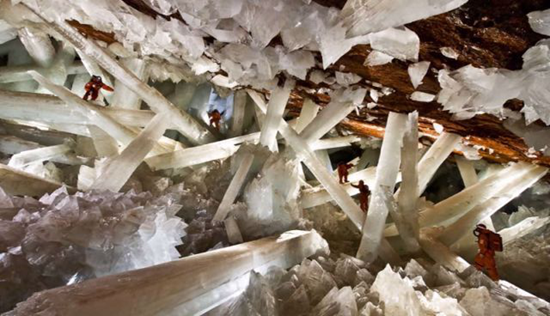
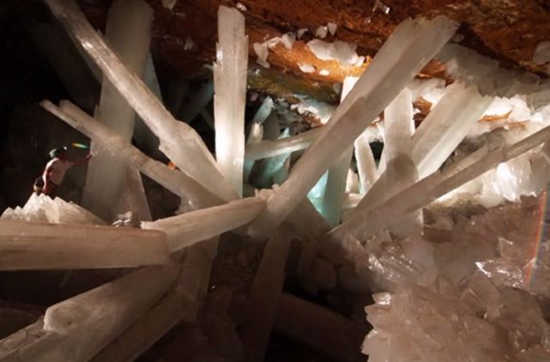

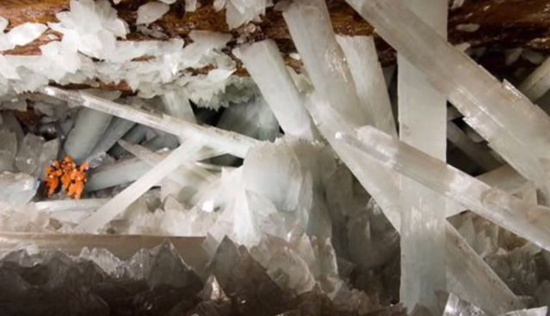
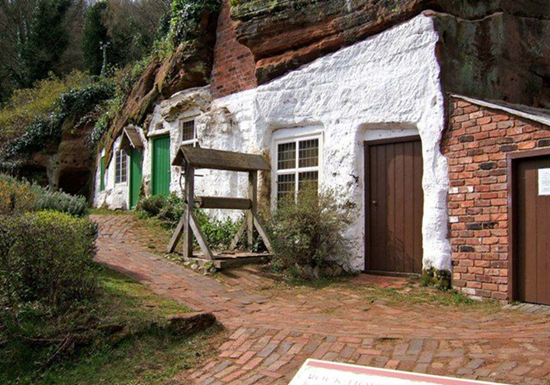
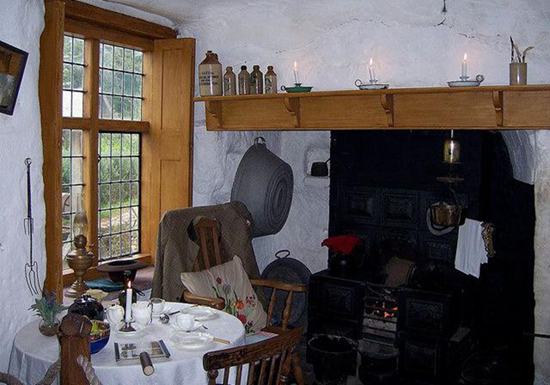
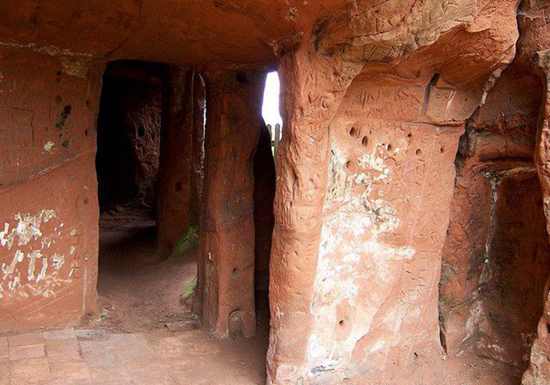
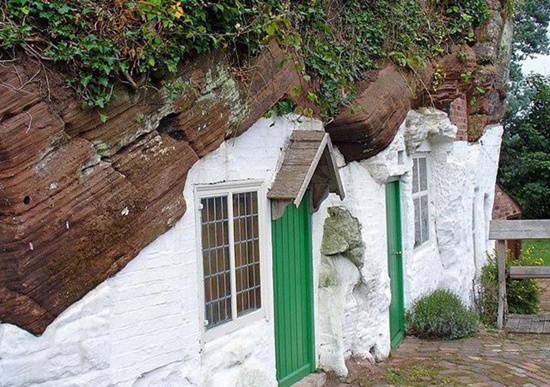
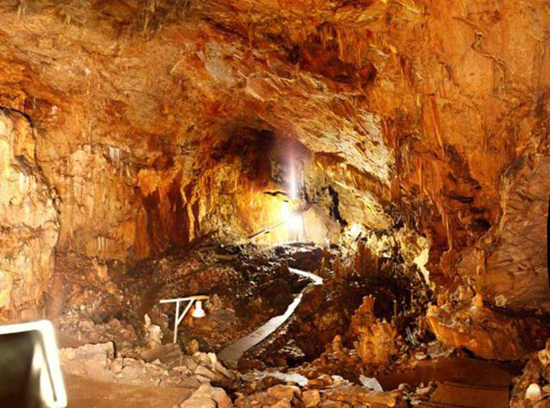

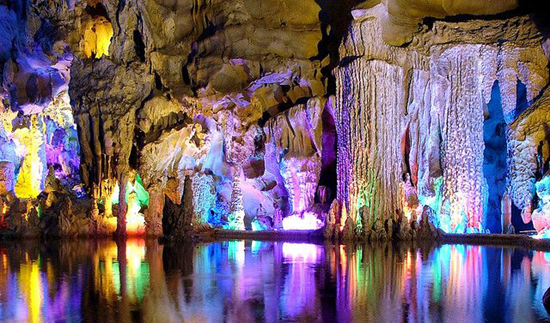
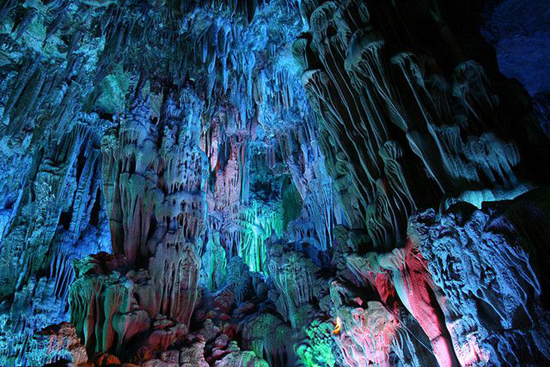
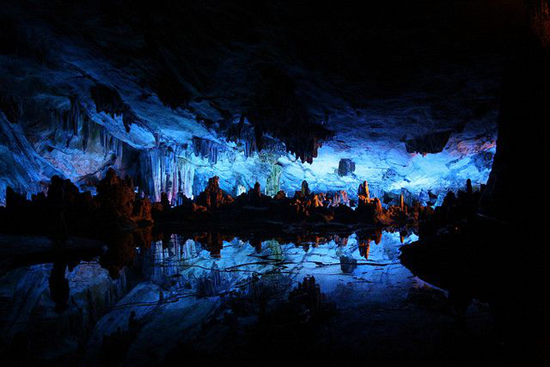

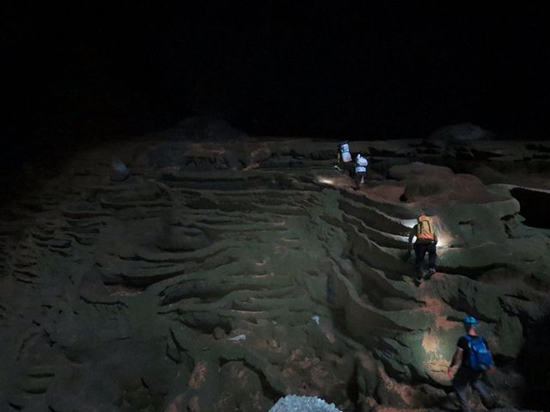

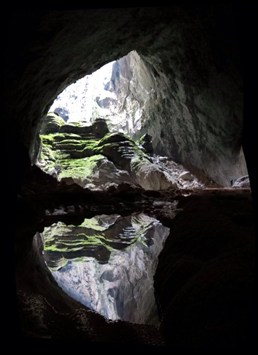
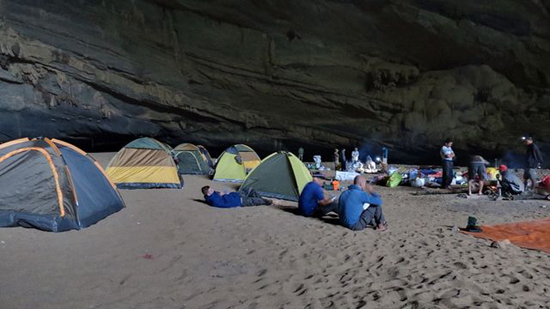



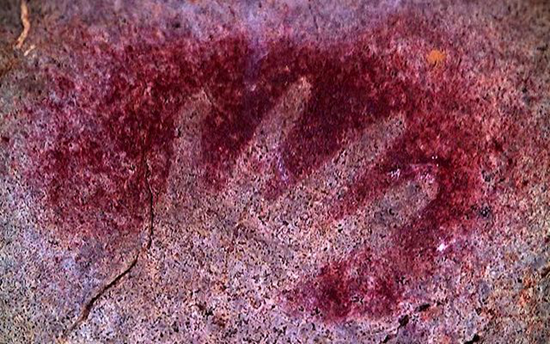

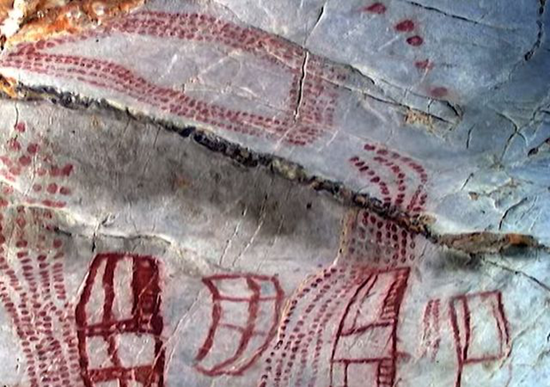
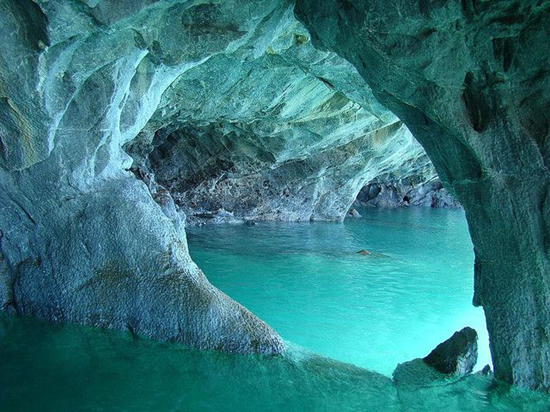
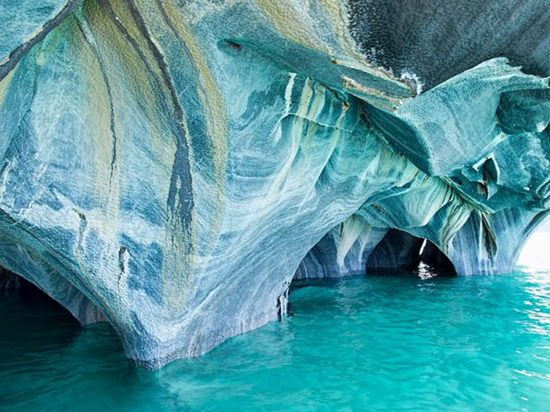

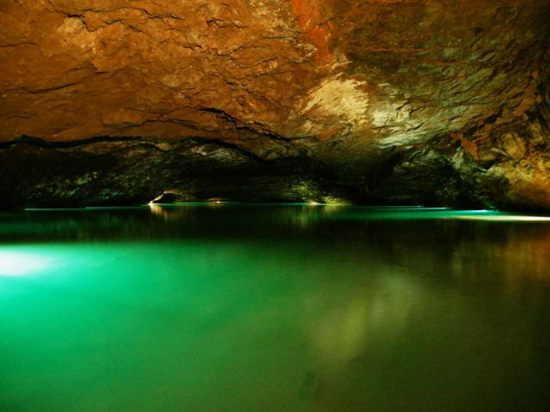
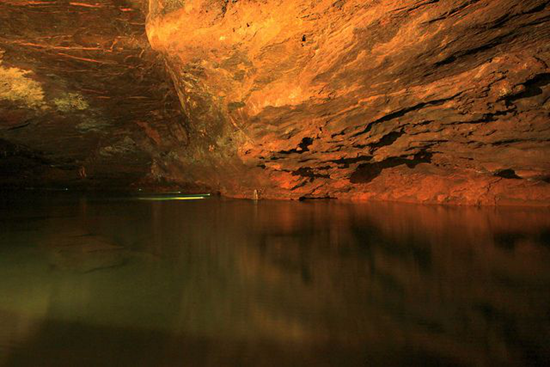
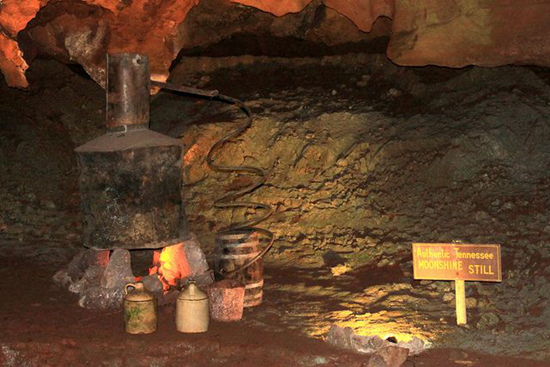
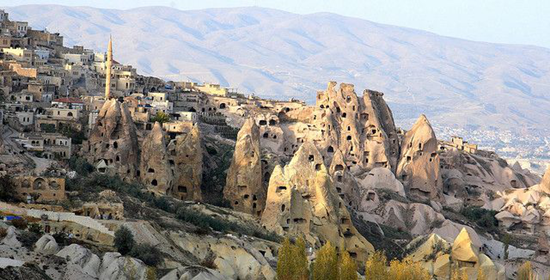

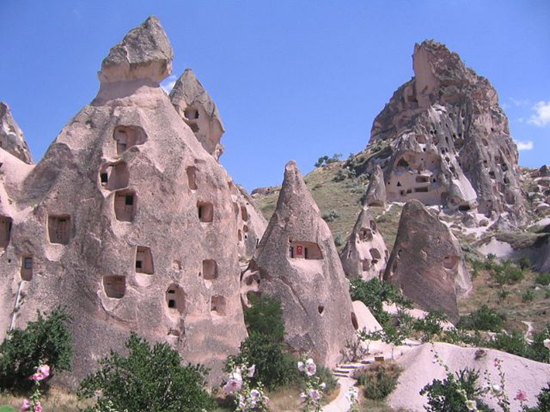
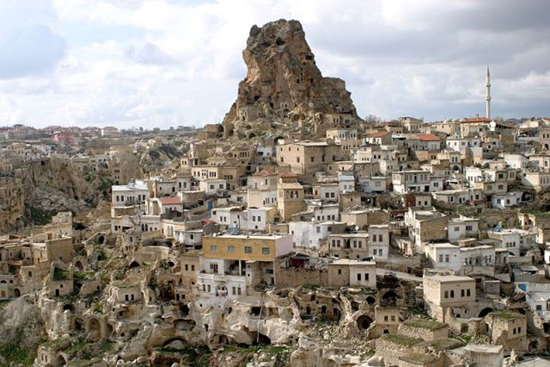
No comments:
Post a Comment
Please adhere to proper blog etiquette when posting your comments. This blog owner will exercise his absolution discretion in allowing or rejecting any comments that are deemed seditious, defamatory, libelous, racist, vulgar, insulting, and other remarks that exhibit similar characteristics. If you insist on using anonymous comments, please write your name or other IDs at the end of your message.